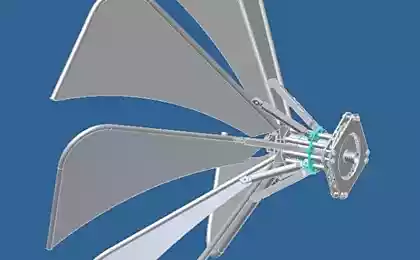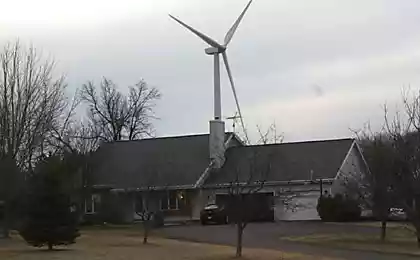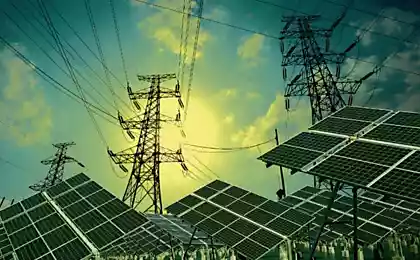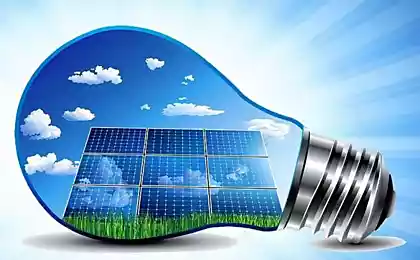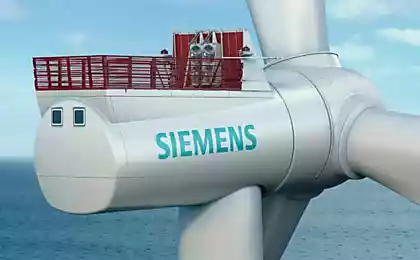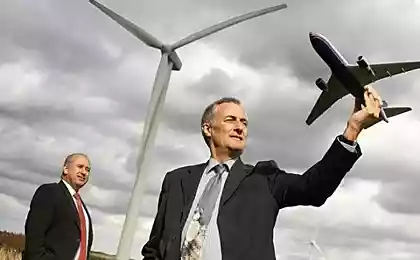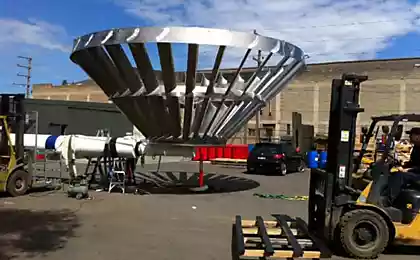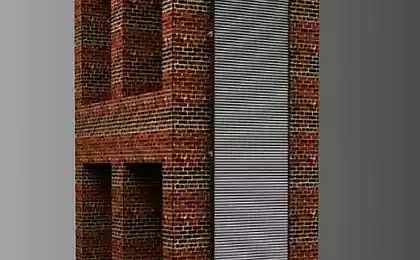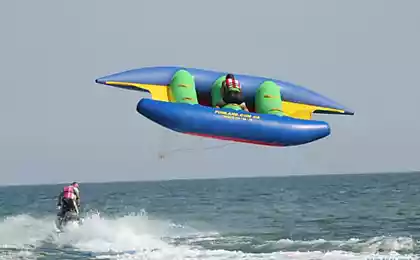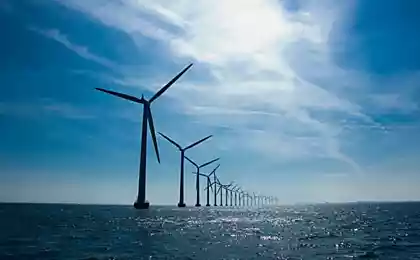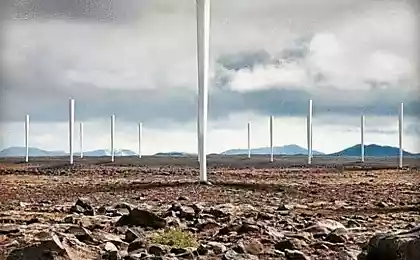567
Kites from KiteGen
A new invention in the field of wind energy promises to raise her to new heights. "Raise" in this case should be understood literally – the wind turbine company KiteGen, unlike their land-based predecessors", will drift in the air flow at a height of over 100 meters.
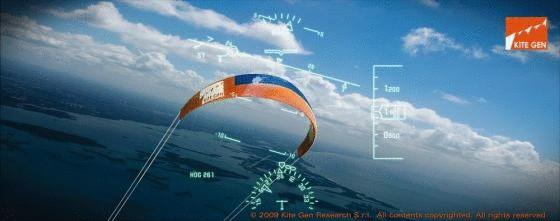
The growing popularity of alternative energy sources and the rapid development of relevant technologies has put the wind on one of the key places in the energy future of many developed countries. Wind turbines are mounted singly or in groups, representing a complete power plant, operating around the world today. As with all technologies, they have their disadvantages, and one of them is that in the classic version of the wind power plant are located near the surface of the earth, while the strongest and most constant winds fly high above them.
The KiteGen technology is designed to correct this injustice. In her case, the energy produced by flying kites, which, passing through a clearly predetermined path, rotate a terrestrial turbine. And while the design is still in the testing phase, it looks at least promising.
In the KiteGen system is the movement of huge "wings" (kites) aviation is regulated by sensors installed in the ground center, where is also located the generator. The automatic control system sets the trajectory of the kites to ensure rotation of the turbine with maximum torque. With the altitude increasing and the average wind speed – it is this fact that allows the new technology to win a comparison with conventional wind turbines, since no stationary windmill installation will not be able to rise to a height of over 100 meters.
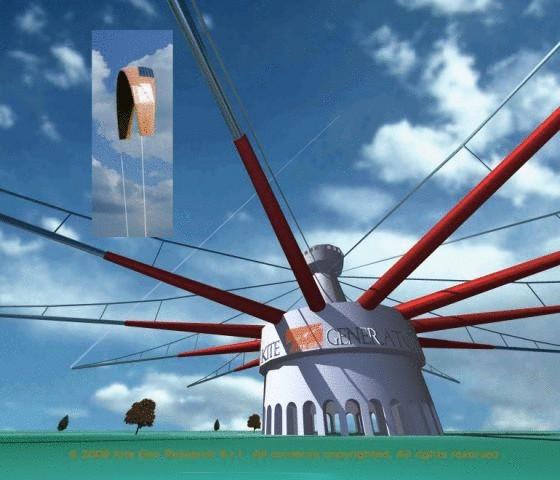
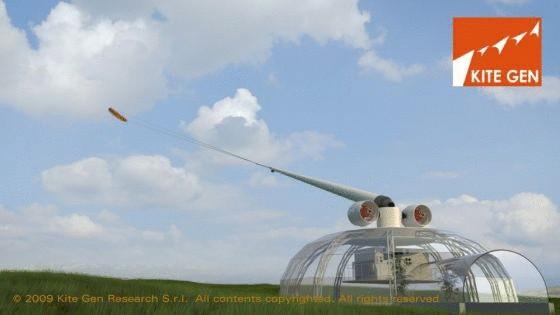
In addition to the potential ability to surpass the efficiency related indicators private wind turbine new installation takes up much less space, allowing you to place "one penny" of the whole wind farm. While the traditional wind power plant of 1000 MW capacity today is 250 to 300 square kilometers of land, more economical approach KiteGen would reduce this area to 5-6 miles without loss of performance. The power plant of this type is much more likely to use high-altitude winds and, consequently, produce more energy, component, at most optimistic estimates, around 500 GWh annually. The expected cost of energy produced by KiteGen will be 0.02-0.05 dollars per kilowatt-hour (for comparison, the cost of energy produced from fossil fuel combustion is 0.05-0.09 USD per kWh, the energy cost of existing wind power plants — 0.15 USD per kWh).
Development company KiteGen was founded by Massimo Ippolito (Ippolito Massimo) in 2007 year. Its main office is located in the Italian town of Chieri, near Turin. At the moment, the company's engineers together with the staff of its branch under the name of Sequoia Automation S. r.l. develop software and mechanical systems design of the device.
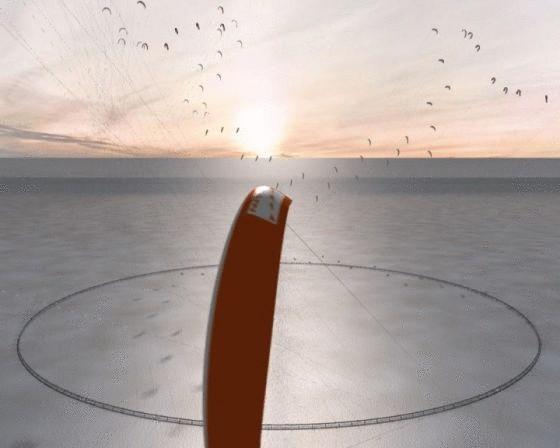
Source: /users/104

The growing popularity of alternative energy sources and the rapid development of relevant technologies has put the wind on one of the key places in the energy future of many developed countries. Wind turbines are mounted singly or in groups, representing a complete power plant, operating around the world today. As with all technologies, they have their disadvantages, and one of them is that in the classic version of the wind power plant are located near the surface of the earth, while the strongest and most constant winds fly high above them.
The KiteGen technology is designed to correct this injustice. In her case, the energy produced by flying kites, which, passing through a clearly predetermined path, rotate a terrestrial turbine. And while the design is still in the testing phase, it looks at least promising.
In the KiteGen system is the movement of huge "wings" (kites) aviation is regulated by sensors installed in the ground center, where is also located the generator. The automatic control system sets the trajectory of the kites to ensure rotation of the turbine with maximum torque. With the altitude increasing and the average wind speed – it is this fact that allows the new technology to win a comparison with conventional wind turbines, since no stationary windmill installation will not be able to rise to a height of over 100 meters.


In addition to the potential ability to surpass the efficiency related indicators private wind turbine new installation takes up much less space, allowing you to place "one penny" of the whole wind farm. While the traditional wind power plant of 1000 MW capacity today is 250 to 300 square kilometers of land, more economical approach KiteGen would reduce this area to 5-6 miles without loss of performance. The power plant of this type is much more likely to use high-altitude winds and, consequently, produce more energy, component, at most optimistic estimates, around 500 GWh annually. The expected cost of energy produced by KiteGen will be 0.02-0.05 dollars per kilowatt-hour (for comparison, the cost of energy produced from fossil fuel combustion is 0.05-0.09 USD per kWh, the energy cost of existing wind power plants — 0.15 USD per kWh).
Development company KiteGen was founded by Massimo Ippolito (Ippolito Massimo) in 2007 year. Its main office is located in the Italian town of Chieri, near Turin. At the moment, the company's engineers together with the staff of its branch under the name of Sequoia Automation S. r.l. develop software and mechanical systems design of the device.

Source: /users/104
